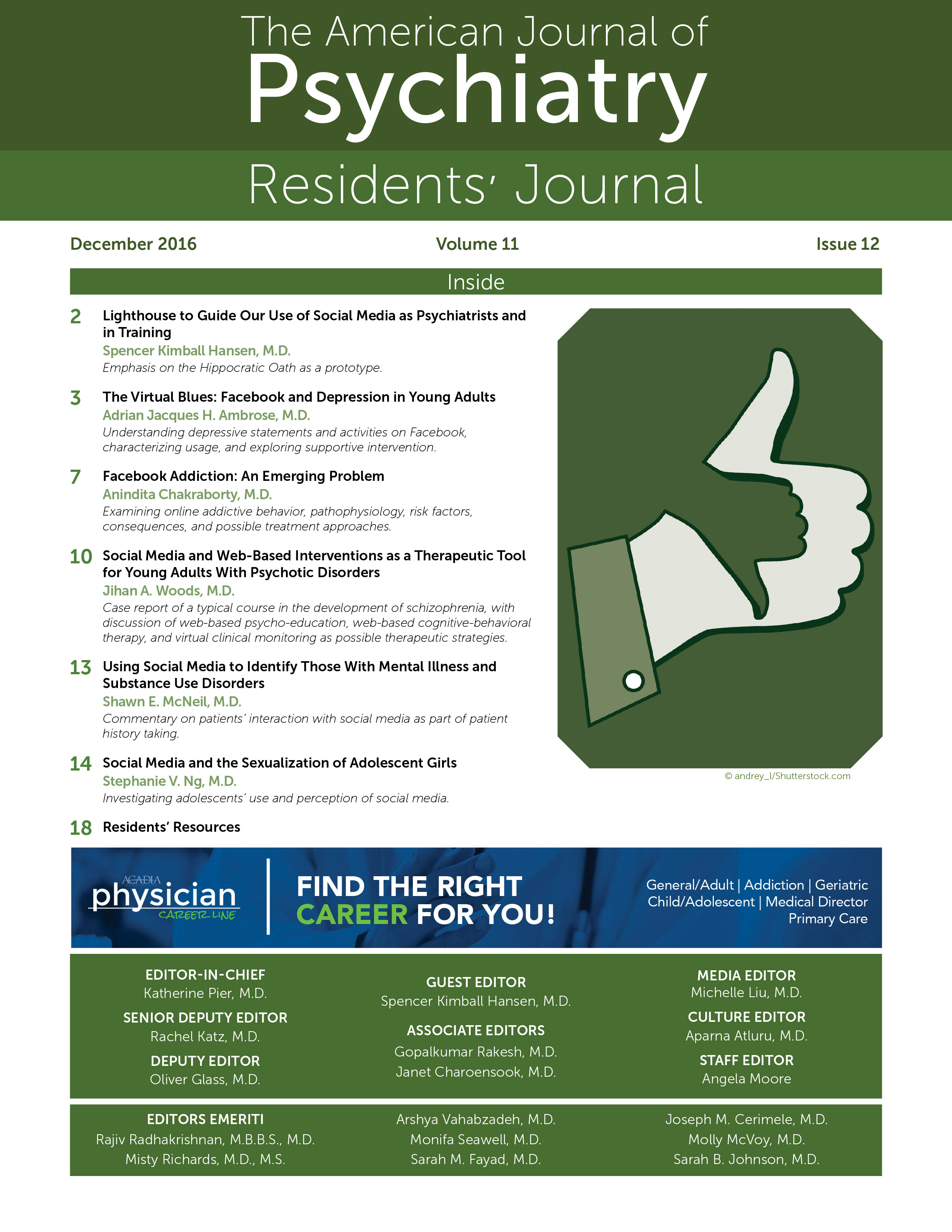While concern about sexualization of adolescent girls is not new, social media has amplified age-old pressures for teenage girls to conform to certain sexualized narratives, as well as opened up new and uncharted ways for them to do so.
Within a developmental period in which peer relationships are paramount and teens seek to differentiate between the “in group” and “out-group,” social media is perfectly positioned to intensify and shape identity formation. A recent book by Nancy Jo Sales,
American Girls: Social Media and the Secret Lives of Teenagers, provides a snapshot. Based on interviews with more than 200 adolescent girls, Sales concludes that social media often reinforces a culture of sexism and misogyny (
1). Adolescent girls are subjected to unasked-for penis pictures, pressured to send nude photographs that then get disseminated to entire social networks (while failure to comply might lead to sexual rumors or other forms of shame), and compete with other girls to garner “likes” online, often by portraying themselves in sexualized ways or belittling other girls online (
1).
Emerging empirical research also corroborates the notion that while sexualization of females is rewarded online (usually by males), females are also punished for these same displays and are quick to be labeled by other female peers as “sluts” or “skanks”(
2). This perpetuates sexual double standards that reinforce gender stereotypes. A review of research on media and sexualization notes that the effects of social media on females is still in its infancy, but it is hypothesized that because social media features peers (rather than celebrities), exposure may generate even more social comparison and body shame than traditional media (
3).
In examining the effects of sexualization of girls, the American Psychological Association Task Force on the Sexualization of Girls detailed a number of negative effects, including decreased cognitive functioning (e.g., impaired ability to concentrate), worsened physical and mental health (e.g., eating disorders, low self-esteem, depression), unrealistic expectations about sexuality, and reductionist beliefs of women as sexual objects (
4).
For psychiatrists and other mental health workers, understanding adolescents’ use and perception of social media is an important component of understanding their world. A systematic review found that estimates of “sexting” (i.e., sending and/or receiving photos or texts of a sexual nature) among adolescents range from about 10% to 25% of adolescents sending sexts, while 15%–35% have received sexts (
5). Social media differs from more traditional forms of media in how easily accessible it is (often away from parent supervision) and how widely disseminated information can be, with limited ways of reversing course and little to no control over who is privy to it.
Awareness and social media literacy are important not only for professionals but also for parents of both genders. Families should be encouraged to have open conversations with their adolescents about their online activities and discuss issues like respect and gender and sexual identity, as well as collaborate with their children to balance safety and emotional well-being with healthy identity experimentation during adolescence.
